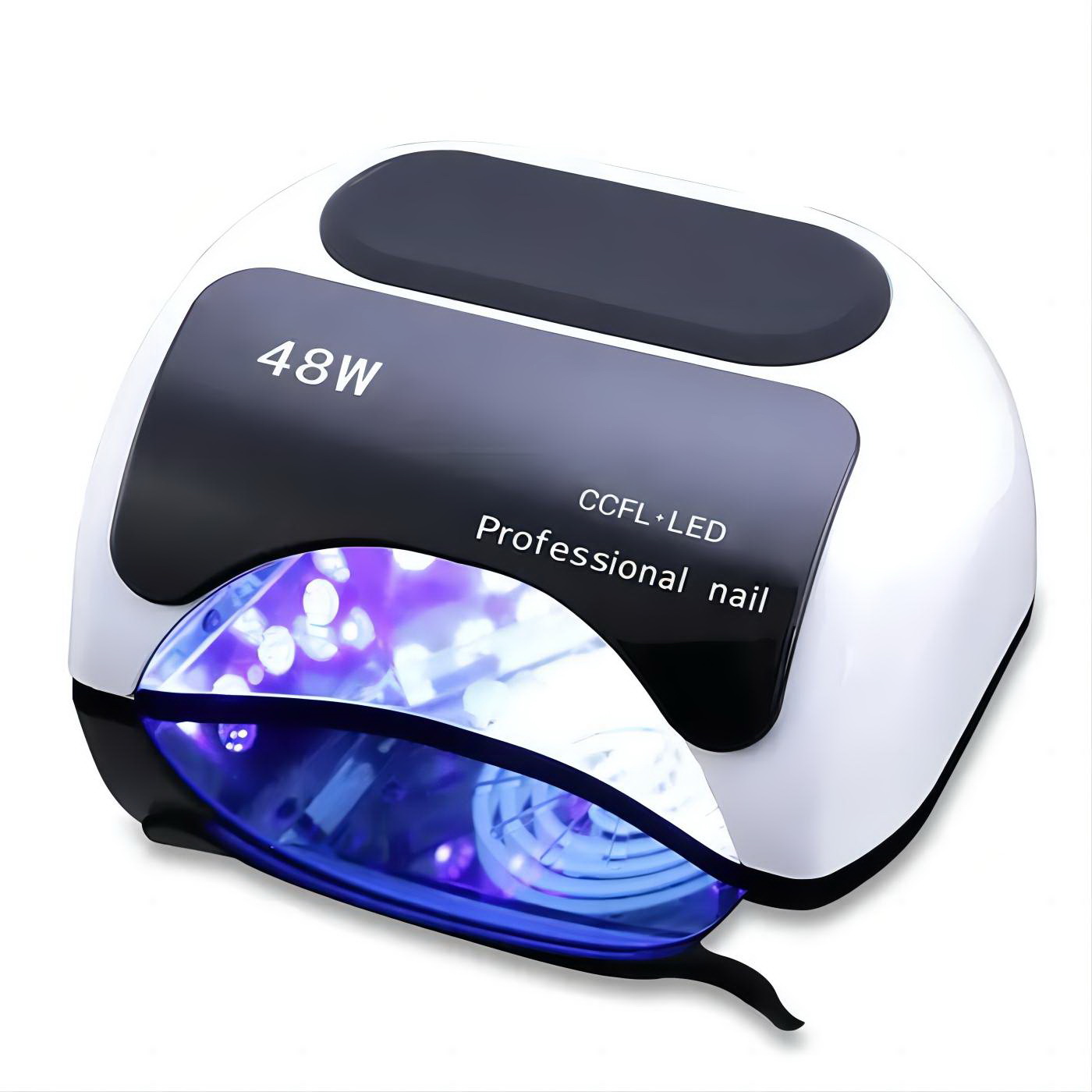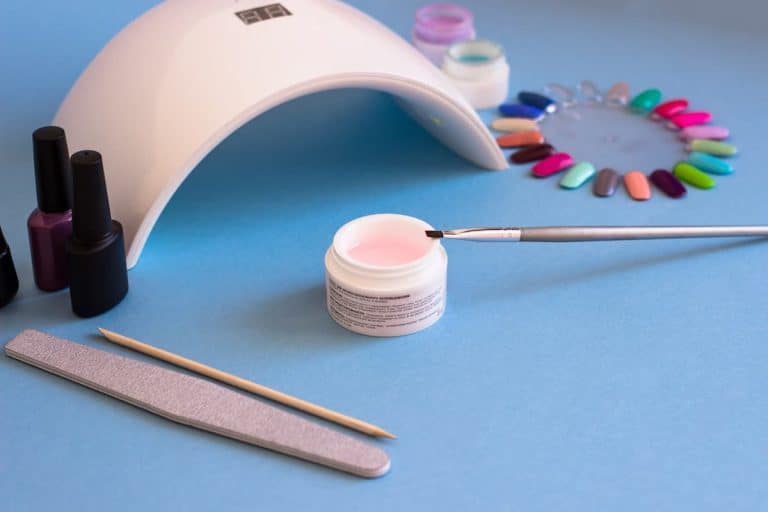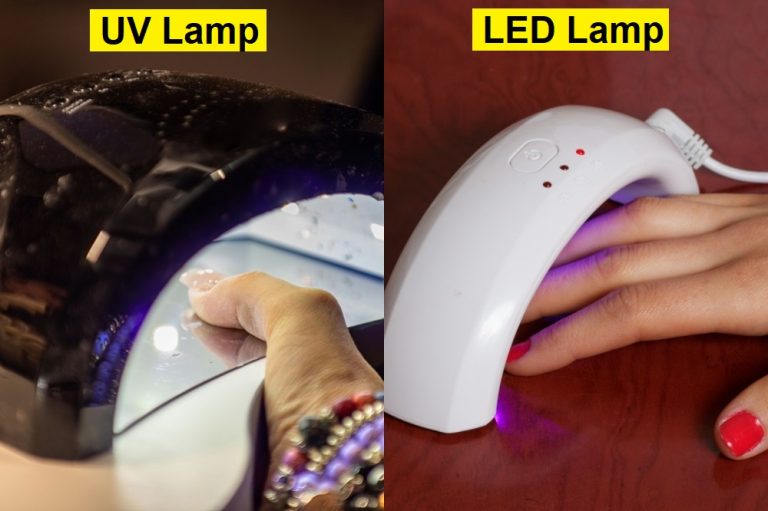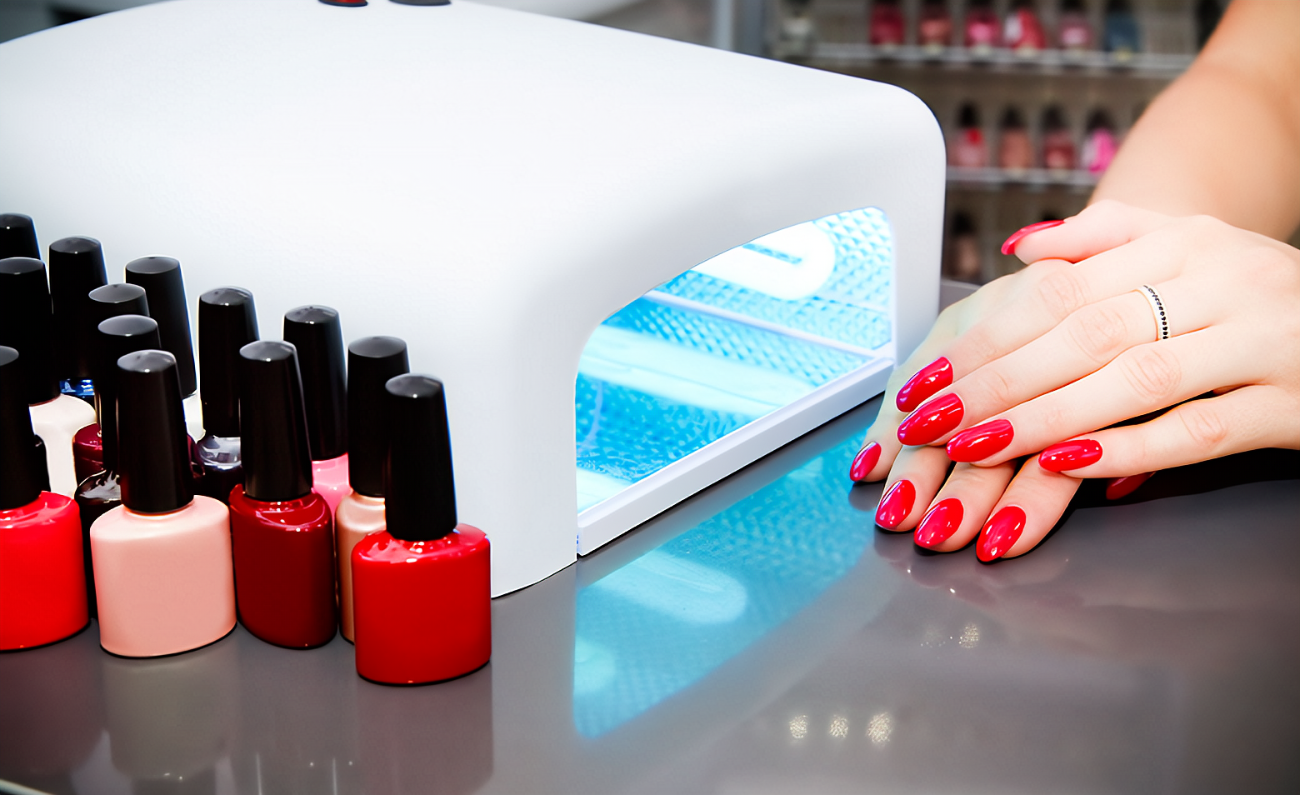In the realm of the nail care industry, UV nail lamps have become an indispensable tool for curing nail polish. However, concerns surrounding the safety of these lamps have remained a subject of discussion. This article delves deep into the topic, aiming to uncover the truth behind the question: “How dangerous are UV nail lamps?” Let’s embark on a journey to understand the science, explore potential risks, and learn about safety measures associated with the use of UV nail lamps.
Understanding UV Radiation:
What is UV Radiation?
UV radiation, short for ultraviolet radiation, lies beyond the visible light spectrum, encompassing wavelengths from 100 to 400 nanometers. It’s divided into three main types: UVA, UVB, and UVC. These rays differ in terms of their wavelength, energy, and potential effects on human health.
UVA (320-400 nm): UVA rays have the longest wavelength among UV rays, and they penetrate the skin more deeply. They are primarily associated with skin aging and can contribute to the development of wrinkles and age spots.
UVB (290-320 nm): UVB rays have a shorter wavelength and affect the outermost layer of the skin. They are a leading cause of sunburn and can also play a role in the development of skin cancer.
UVC (100-290 nm): UVC rays have the shortest wavelength and are typically filtered out by the Earth’s atmosphere, so they pose minimal threat to human health.
Potential Hazards of UV Radiation:
Excessive exposure to UV radiation can have several adverse effects on the skin and overall health:
- Skin Damage: UVA and UVB rays can damage the DNA in skin cells, leading to premature aging, reduced skin elasticity, and the development of skin cancer.
- Eye Damage: Prolonged exposure to UV radiation can harm the eyes, leading to conditions like cataracts and macular degeneration.
- Immune Suppression: UV radiation can weaken the immune system, making the body more susceptible to infections and diseases.
- Vitamin D Production: While UVB rays contribute to vitamin D synthesis, overexposure can lead to an imbalance and potential health risks.
Understanding the distinctions between UVA, UVB, and UVC radiation is vital in comprehending the potential risks associated with UV nail lamps and other sources of UV exposure. Proper precautions and knowledge can help individuals make informed decisions about their UV exposure levels.
Understanding UV Nail Lamp Operation:
How Do UV Nail Lamps Work?
UV nail lamps are instrumental in the nail care industry for their ability to efficiently cure and harden nail products. These lamps employ a straightforward yet effective mechanism to achieve this process.
When UV nail polish is applied to the nails, it remains in a semi-liquid state. The UV nail lamp emits UV light, predominantly UVA rays, which initiate a chemical reaction known as photopolymerization. This reaction causes the molecules in the nail polish to cross-link and form a durable, solid layer.
Effects of Wavelength and Intensity:
The wavelength and intensity of the emitted UV light play a crucial role in the curing process and its safety. Different wavelengths of UV light have varying levels of energy and penetration capabilities. UVA rays are commonly used in UV nail lamps due to their lower energy compared to UVB or UVC rays. This choice helps balance curing efficiency with potential risks.
Excessive exposure to UV light, even UVA, can increase the risk of skin damage and other health concerns. Therefore, nail technicians and clients should consider the lamp’s intensity, exposure time, and protective measures to ensure a balance between efficient curing and safety.
Maximizing Safety and Efficiency:
While UV nail lamps offer the advantage of rapid curing, it’s essential to adhere to safety guidelines to minimize risks:
- Controlled Exposure: Limit exposure time to recommended durations to reduce the potential hazards of UV radiation.
- Use UV-Blocking Gloves: Utilize UV-blocking gloves or apply sunscreen to shield the skin from UV exposure.
- Protective Eyewear: Wear protective eyewear to shield the eyes from UV radiation.
- Quality Lamps: Invest in quality UV nail lamps that emit UVA rays within safe intensity levels.
By understanding how UV nail lamps operate and how their emitted UV light interacts with nail products, users can make informed choices to maximize the efficiency of their manicures while prioritizing safety and well-being.
Potential Health Risks:
Is there a risk from prolonged exposure?
Extended exposure to UV radiation, whether from the sun or UV nail lamps, poses potential health risks that individuals should be aware of. Prolonged exposure to UV radiation can lead to several adverse effects, including:
Skin Damage and Sunburn: Long hours under UV radiation can result in skin damage and sunburn, which is characterized by redness, pain, and peeling of the skin.
Premature Aging (Photoaging): Consistent exposure to UV rays can accelerate the aging process, leading to fine lines, wrinkles, and age spots.
Immune Suppression: UV radiation can suppress the immune system, making the body more susceptible to infections and impairing its ability to fight off diseases.
To mitigate these risks, it’s essential to adopt protective measures:
- Limit exposure time to UV radiation, especially for those with fair skin or a history of sunburn.
- Apply a broad-spectrum sunscreen with a high SPF to exposed skin areas.
- Wear protective clothing, including long sleeves, hats, and sunglasses.
Risk of Nail Cancer:
Is there a link between UV radiation and nail cancer?
Research has explored the potential link between UV radiation and the risk of developing nail cancer. While current studies do not provide conclusive evidence, it’s crucial to be mindful of the potential risks, particularly for those who are regularly exposed to UV radiation.
Assessing Risks for Nail Professionals and Clients:
Nail technicians and customers alike should consider the potential risks associated with UV nail lamps:
- Nail Professionals: Regular and prolonged exposure to UV radiation during work hours may increase the risk of skin damage and nail cancer.
- Clients: Although UV lamp exposure is relatively short during manicures, it’s advisable to take precautionary measures, such as applying sunscreen to the hands.
Conclusion:
While the risks associated with UV nail lamps’ exposure are not entirely clear-cut, taking proactive steps to minimize exposure and protect the skin is essential. By understanding the potential health risks and staying informed, individuals can make informed decisions about UV exposure while enjoying the benefits of nail care.
Best Practices for Safe UV Nail Lamp Usage:
Optimal Practices: How to Safely Use UV Nail Lamps?
Ensuring safe usage of UV nail lamps is paramount to minimize potential risks. Employing the following best practices can significantly reduce the risks associated with prolonged UV exposure:
Limit Exposure Time: Minimize the time your skin is exposed to UV radiation by adhering to recommended curing times. Balance the need for a complete cure with the importance of skin safety.
Wear UV-Protective Eyewear: Utilize specialized UV-protective eyewear designed to block UVA and UVB rays. This shields the eyes from potential damage caused by direct UV exposure.
Apply Broad-Spectrum Sunscreen: Before using UV nail lamps, apply a broad-spectrum sunscreen with a high SPF to your hands. This helps create an additional barrier against UV radiation.
Keep a Safe Distance: Maintain a safe distance between your hands and the UV lamp. A greater distance can help reduce the intensity of UV radiation reaching the skin.
Regular Skin Checks: Periodically examine your skin for any changes, such as unusual spots or discoloration. Early detection can aid in identifying potential skin damage or concerns.
Moisturize: Hydrate your hands and cuticles with moisturizing creams or oils to maintain skin health and minimize dryness caused by UV exposure.
Stay Informed: Stay up-to-date with the latest research and safety recommendations regarding UV nail lamp usage. Being informed empowers you to make educated decisions about your nail care routine.
Conclusion:
By following these recommended practices, individuals can enjoy the benefits of UV nail lamps while minimizing the potential risks associated with UV exposure. Prioritizing safety and adopting protective measures ensures not only beautiful nails but also the well-being of the skin and overall health.
Standards and Regulations in the Nail Care Industry:
Industry Standards and Regulations:
The nail care industry operates under regulatory standards to ensure the safety and well-being of both nail technicians and clients. These standards are especially important when it comes to the usage of UV nail lamps, as they involve exposure to potentially harmful UV radiation.
Regulatory Guidelines:
Regulatory bodies within the nail care industry establish guidelines for the safe usage of UV nail lamps. These guidelines encompass various aspects, including:
UV Radiation Limits: The permissible level of UV radiation emitted by UV nail lamps is often regulated to prevent excessive exposure and potential harm.
Safety Measures: Guidelines may require the provision of protective eyewear, UV-blocking gloves, and other safety equipment to minimize the risks associated with UV radiation.
Regular Inspections: Nail salons and technicians may be subject to regular inspections to ensure compliance with safety regulations, including proper usage of UV nail lamps.
Training and Education: Nail technicians may undergo training to understand the potential risks and safe usage practices associated with UV nail lamps.
The Importance of Compliance:
Compliance with industry regulations and standards is paramount to ensure the safety of both professionals and clients. By adhering to these guidelines, nail technicians demonstrate their commitment to providing quality services while prioritizing health and safety.
Conclusion:
As an essential tool in the nail care industry, UV nail lamps are subject to regulatory standards that emphasize safety and well-being. Nail technicians and salon owners are encouraged to stay informed about these regulations, ensuring that their practices align with industry standards, resulting in a secure and enjoyable experience for all.
Conclusion: Prioritizing Safety in UV Nail Lamp Usage
Using UV nail lamps demands a comprehensive understanding of potential risks and the implementation of suitable preventive measures. While inherent health risks may exist, adhering to best practices and industry regulations can significantly mitigate these risks. Ultimately, ensuring the safety and well-being of both nail professionals and clients remains the paramount goal.
By staying informed, practicing caution, and abiding by industry guidelines, individuals can confidently enjoy the benefits of UV nail lamps while minimizing any potential adverse effects. Through responsible usage and a commitment to safety, the nail care experience can be both beautiful and secure.




